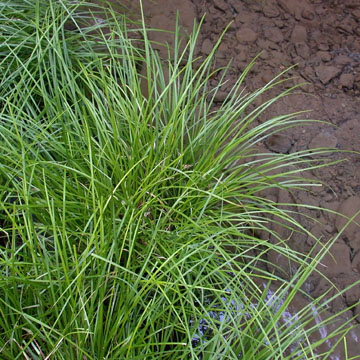

Carex torta - (image 1 of 5)
Taxonomy
Family: Cyperaceae
Section Phacocystis
Habitat
Rocky streambeds, banks and sandbars.
Associates
Distribution
Quebec and Nova Scotia to NC, west to central Ontario, IA, and OK.
Morphology
Tufted perennial; stems stout, 20-70 cm, arising laterally; lowest leaves reduced to bladeless sheaths; main leaves 3-5 mm wide, M-shaped in cross-section; terminal spike staminate, 2-4 cm, pedunculate; pistillate spikes 3-6, usually approximate and overlapping, linear-cylindric, 3-8 cm, the lower on short peduncles and curved-spreading or drooping, the upper sessile or nearly so; bracts sheathless, the lowest leaf-like, usually shorter than the stem, the others much reduced; pistillate scales elliptic to oblong, obtuse, about as long as but narrower than the perigynia, with a broad, greenish or stramineous midstrip and purple-brown to black margins; perigynia ovate, 2.5-4.2 mm long and half as wide, 2-ribbed and otherwise nerveless, gradually tapering to a minute, bent or twisted beak; achenes lenticular, filling the lower 3/4 of the perigynium.
Notes
Fruiting late May to June
Wetland indicator: OBL
Forms distinctive tussocks in rocky streams. The perigynia are shed soon after they mature so they are unlikely to be seen after June. The name refers to the minute bent or twisted beak of the perigynium.
References
Ball, P.W. and A.A. Reznicek. 2002. Carex, In: Flora of North America Editorial Committee, Eds. Flora of North America North of Mexico. Volume 23. Oxford University Press, New York.
Gleason, Henry A. and A. Cronquist. 1991. Manual of Vascular Plants of
Northeastern United States and Adjacent Canada. Second Ed.
The New York Botanical Garden. Bronx, NY
|
© Michael Hough 2018 |